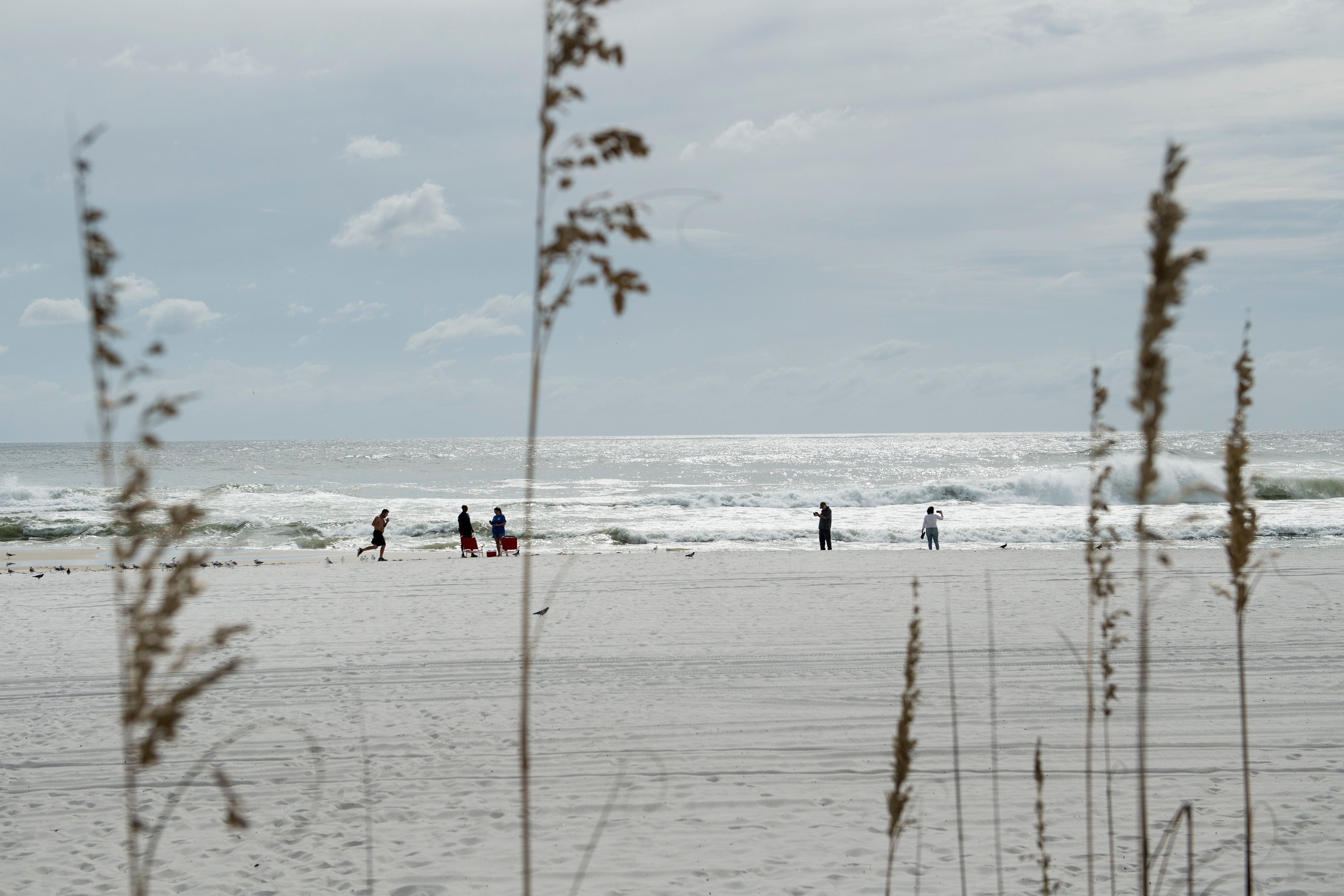Hazardous water warnings as Gulf of Mexico rip currents kill 11 people in two weeks in Florida and Alabama
Hazardous conditions set to continue through Tuesday
Your support helps us to tell the story
From reproductive rights to climate change to Big Tech, The Independent is on the ground when the story is developing. Whether it's investigating the financials of Elon Musk's pro-Trump PAC or producing our latest documentary, 'The A Word', which shines a light on the American women fighting for reproductive rights, we know how important it is to parse out the facts from the messaging.
At such a critical moment in US history, we need reporters on the ground. Your donation allows us to keep sending journalists to speak to both sides of the story.
The Independent is trusted by Americans across the entire political spectrum. And unlike many other quality news outlets, we choose not to lock Americans out of our reporting and analysis with paywalls. We believe quality journalism should be available to everyone, paid for by those who can afford it.
Your support makes all the difference.Rip currents have killed 11 people within the last two weeks along the US Gulf Coast, according to federal officials.
The deaths have spanned from Fort Morgan, Alabama, to Panama City Beach, Florida, according to the National Weather Service, with high risk conditions persisting in Walton, Bay, and Gulf counties in Florida through Tuesday.
Three people died in a single day on Saturday in the Florida city, according to the data.

The victims were identified by Panama City police as Kimberly Ann Mckelvy Moore, 39, of Lithonia, Georgia; Morytt James Burden, 63, of Lithia Springs, Georgia; and Donald Wixon, 68, of Canton, Michigan.
“You say you are a ‘good’ swimmer, an experienced swimmer, a competitive swimmer. But you are no match for a rip current,” the Bay County, Florida, sheriff’s office, based in Panama City, said in a Facebook post on Monday, featuring aerial images of channels in the sand carved out by rip currents.
“These are pictures of the trenches dredged in the sand under the water as a result of the powerful rip currents this past weekend. These are so deep they are easily seen from above. There are quite a few of them. The pictures were taken yesterday from one of our helicopters. They say a picture is worth a thousand words. We hope so.”
Conditions off the beaches of Panama City have been abnormally hazardous the last month, with double red flag warnings, signifying extreme risk to oceangoers, flying every day since12 June.
“Rip currents are powerful, channeled currents of water flowing away from shore,” according to the National Oceanic and Atmospheric Administration. “They typically extend from the shoreline, through the surf zone, and past the line of breaking waves.”
The currents prove especially lethal because people often try to swim against the direction of the moving water to get to safety, which can tire out even the most powerful swimmers. Instead, experts advise those caught in rip currents to swim sideways or at an angle away from the outflowing current, parallel to the beach, until they are outside of its pull and can get to safety.
Over 100 people each year die in rip currents in the US, and such currents are responsible for an estimated 80 per cent of lifeguard rescues, according to the US Lifesaving Association. Rip currents are the third-leading cause of weather-related fatalities in the US between 2013 and 2023, according to the NWS, more than lightning, tornadoes, or hurricanes. Telltale signs of a rip current include narrow, localised columns of churning water near breaks in sandbars, piers, and other gaps in a beach’s normal wave pattern.
Daryl Pauyl, beach safety director at Panama City Beach Fire Rescue, told WJHG that the best thing beachgoers can do is heed the warnings or safety officials and stay near lifeguards.
“The safest place to be when you come to the beach is near a lifeguard,” he said. “And I will always pump that out. Swim near a lifeguard.”
“A lot of the times the rescues are simply from the people we already warned,” he added.




Join our commenting forum
Join thought-provoking conversations, follow other Independent readers and see their replies
Comments